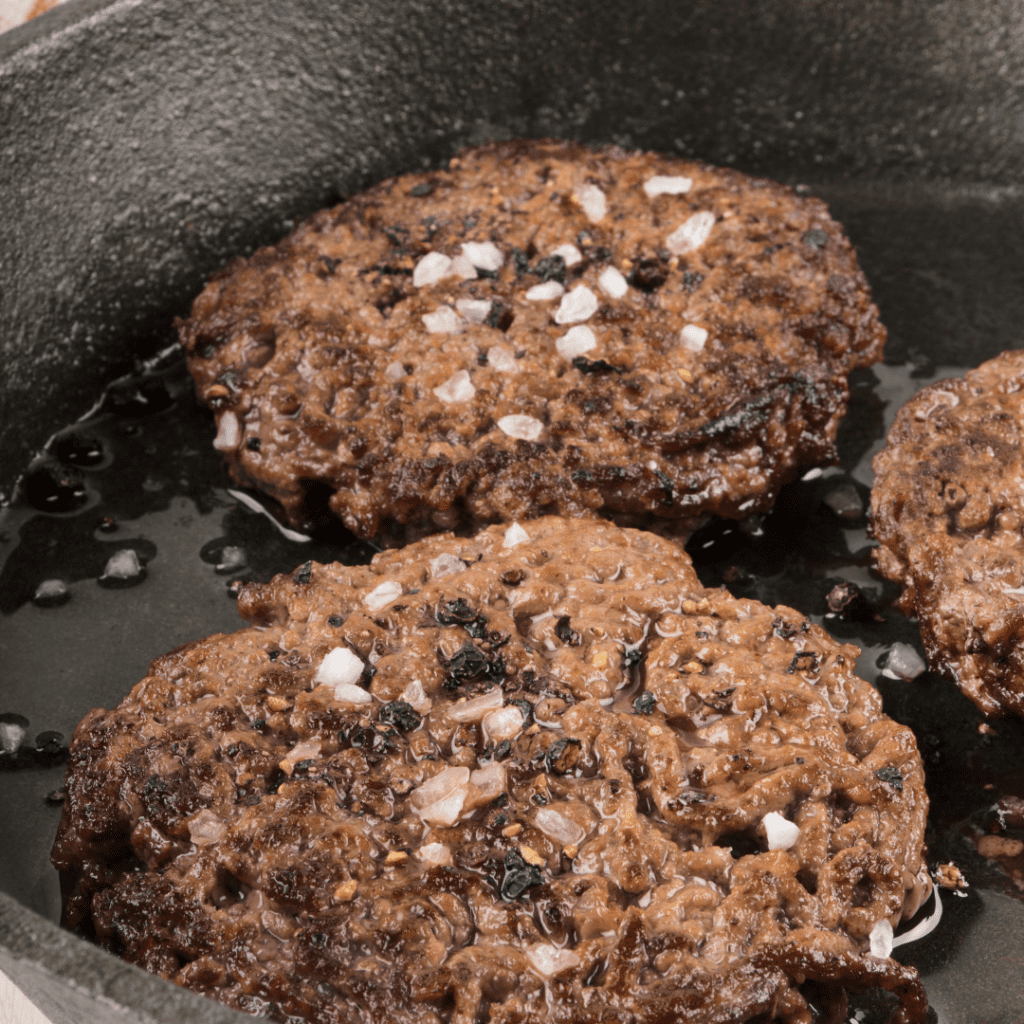How to season cast iron.
Cooking with cast iron cookware has been a culinary tradition passed down through generations for its durability and versatility in the kitchen. Understanding how to season cast iron is essential to maintaining and enhancing its cooking properties. This article will delve into the history and benefits of cast iron, explore the importance of proper seasoning, provide a step-by-step guide on how to season cast iron cookware, offer tips for cooking with seasoned cast iron, and address common seasoning issues that may arise. By following these guidelines, you can unlock the full potential of your cast iron cookware for delicious meals and lasting performance.
This is a pinnable post. Tap or hover over any image in this post to pin to your Pinterest Boards.
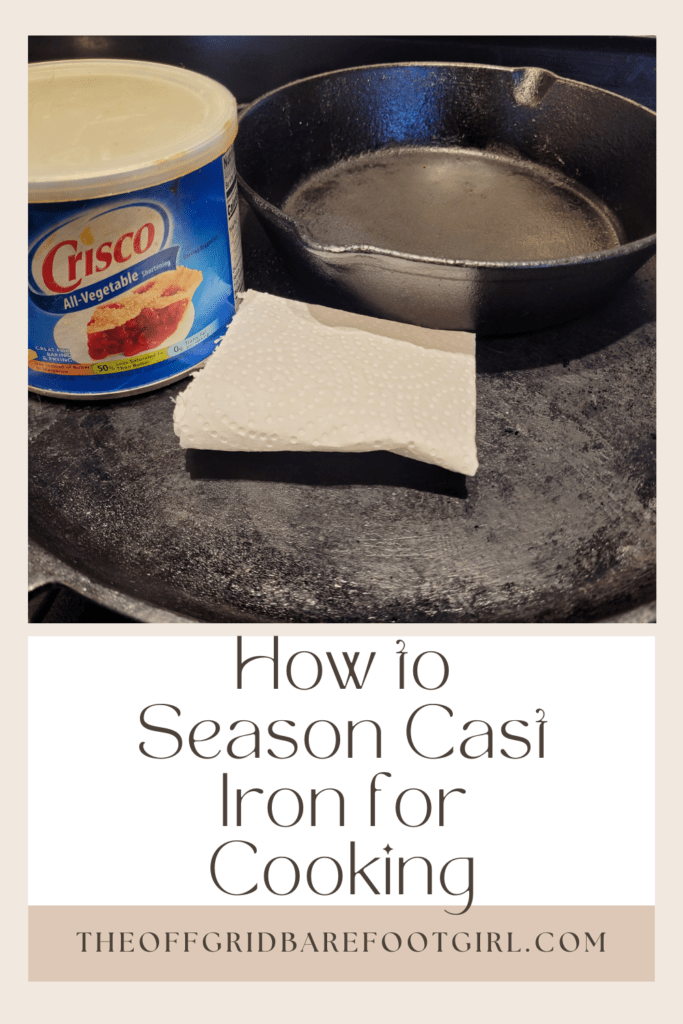
Introduction to Cast Iron Cookware
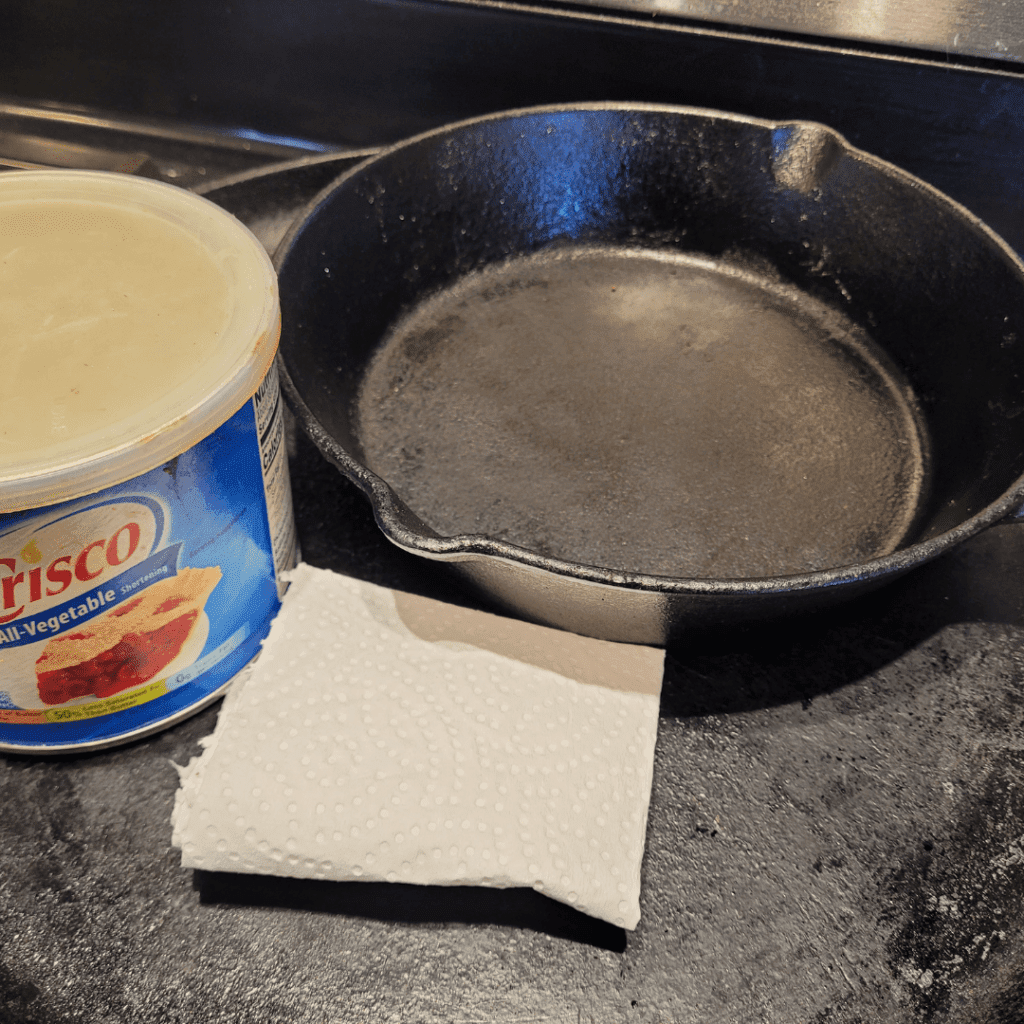
Cast iron cookware is like the trusty sidekick of the culinary world – durable, versatile, and always ready to help you cook up a storm. Its history dates back centuries, and its benefits include excellent heat retention and even cooking.
It’s perfect for searing meats, baking cornbread, or even frying up some stir fry. The key to using cast iron successfully is proper seasoning and maintenance; this involves coating the pan with oil and heating it to create a natural non-stick surface. Plus, cooking with cast iron adds a small amount of iron to your food, which can be beneficial for those who are deficient. With a little TLC, your cast iron cookware will become a treasured part of your kitchen arsenal for years to come!
Interested In Cast Iron Cookware?
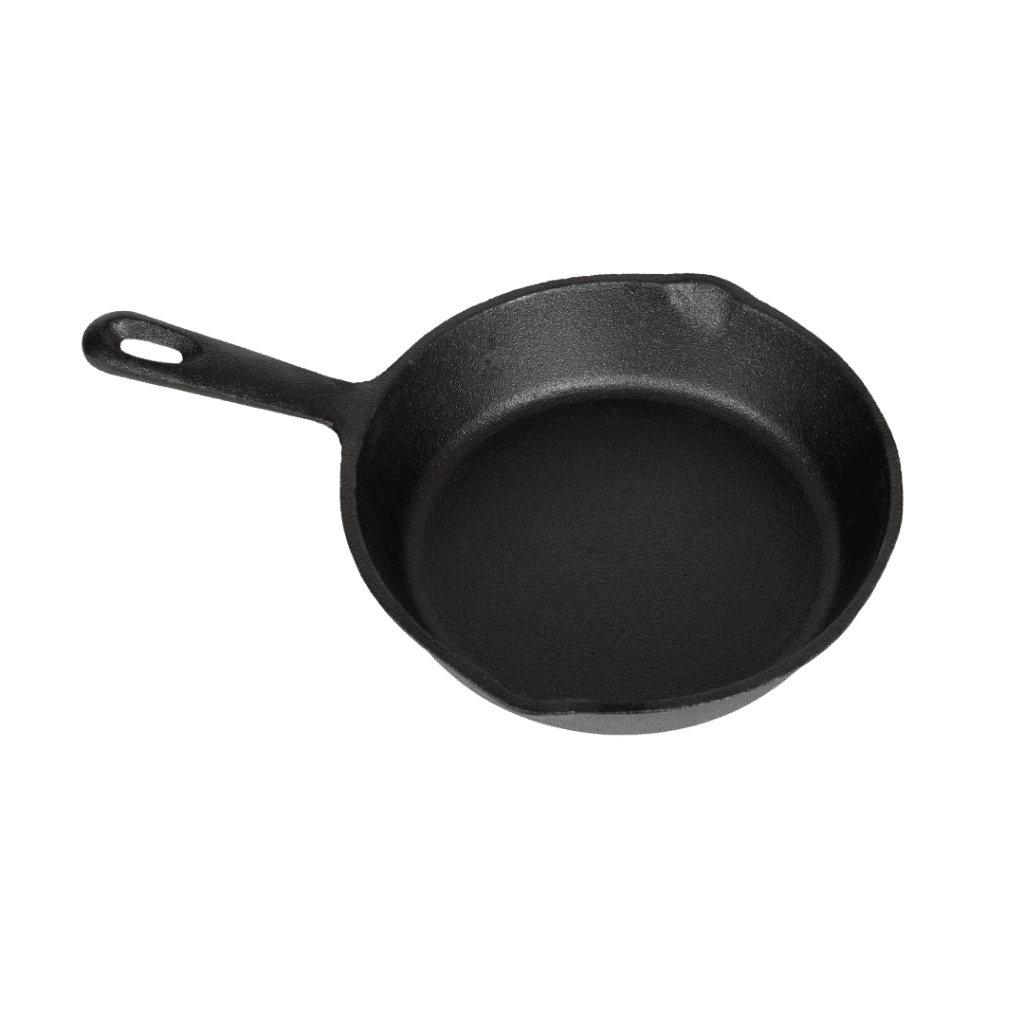
History and Benefits of Cast Iron
Cast iron cookware has been around since, well, forever – okay, maybe not forever, but definitely a really long time. Its ability to distribute heat evenly and hold onto it like a koala clinging to a eucalyptus tree makes it a favorite among chefs and home cooks alike. I absolutely love cooking with cast my cast iron cookware!
Cast iron pans are excellent for searing, roasting, and frying as they distribute heat evenly across the surface. Cast iron cookware is non-stick when properly seasoned, making it easy to clean and maintain. Additionally, these pans are versatile and can be used on stovetops, in ovens, or even over a campfire. With proper care, cast iron cookware can last a lifetime and be passed down through generations, making it a sustainable choice for home cooks looking to invest in high-quality kitchen tools.
Types of Cast Iron Cookware
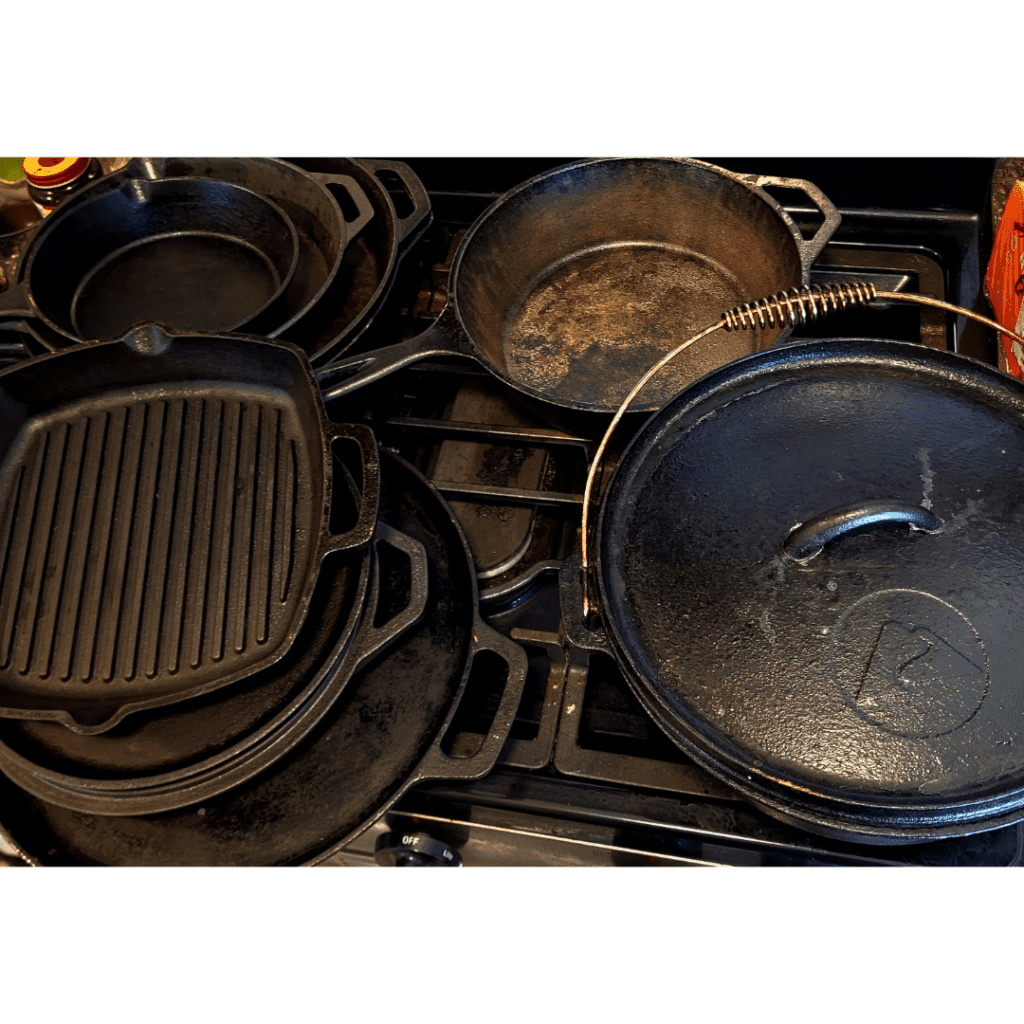
From skillets to Dutch ovens, cast iron cookware comes in all shapes and sizes. Whether you’re searing a steak or baking cornbread, there’s a cast iron pan or pot out there just waiting to be seasoned and put to work in your kitchen. Having a nice selection of cast iron cookware can come in handy when cooking a lot of food at once or for cooking a variety of different foods that require different pans.
For instance, having a large cast iron Dutch oven with a lid can help you bake delicious bread and casseroles or root vegetables. Having a large cast iron griddle can help you cook up a big batch of pancakes to feed your hungry family. I have 10 pieces of cast iron cookware added to my little collection. They are precious to me and were given as a gift from my husband! Some pieces are in desperate need of seasoning, more so than others! On this day, I pulled them all out for a good scrubbing and seasoning session.
Importance of Seasoning Cast Iron
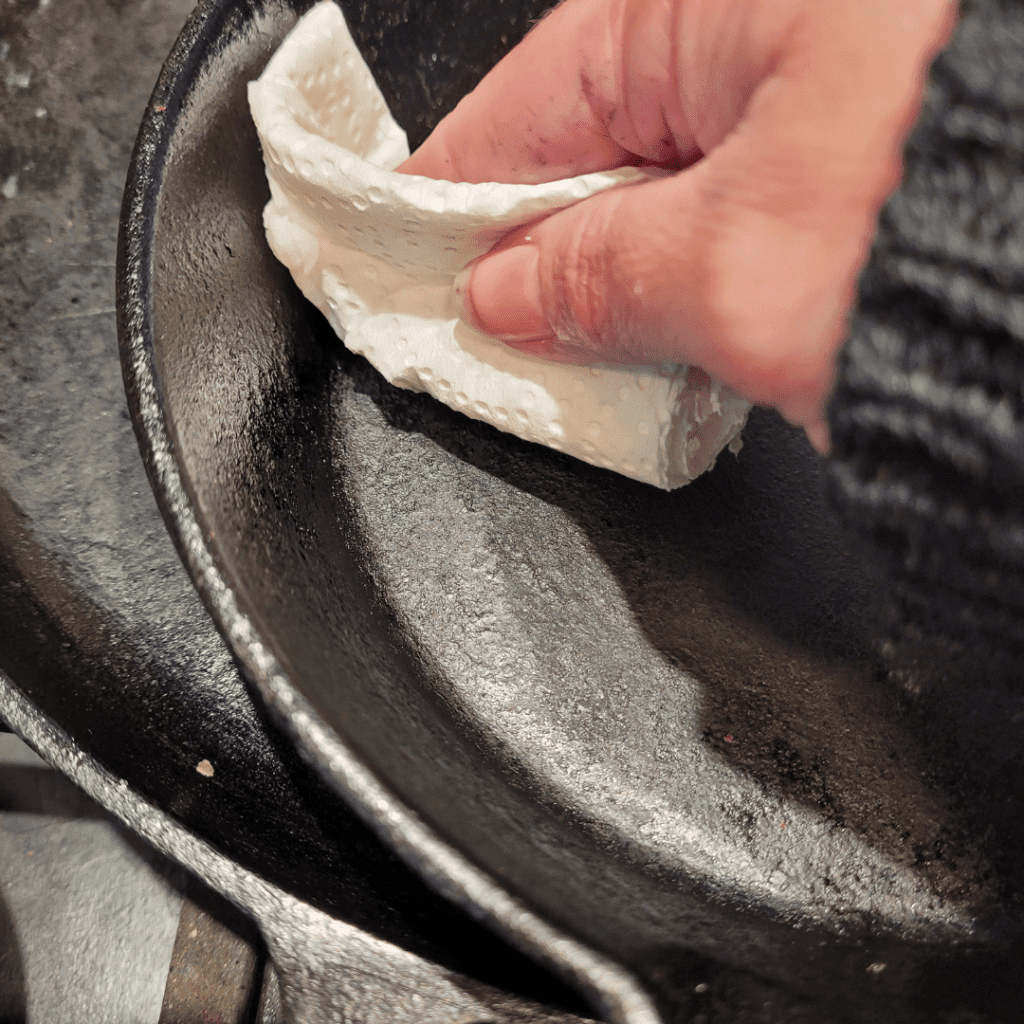
Seasoning your cast iron cookware isn’t just a suggestion, it’s a necessity. Not only does it make your pans non-stick superstar material, but it also helps prevent them from turning into a rusty mess and a joy to cook with!
By adding a layer of oil or fat to the pan and heating it, you create a polymerized coating that fills in the pores of the metal, creating a smooth surface that food won’t stick to. This process not only makes cooking easier, but also adds flavor to your dishes over time. Properly seasoned cast iron cookware can even be passed down for generations, with each cooking session helping to enhance its seasoning. So don’t skip this important step – take care of your cast iron by seasoning it regularly and enjoy delicious meals cooked in a pan that gets better with every use.
Enhancing Non-Stick Properties
So, here’s the deal with making your cast iron cookware even more non-stick. One simple and effective method is to season your pan properly. This involves heating up the pan, applying a thin layer of oil, and baking it in the oven at a high temperature. This process creates a natural non-stick coating on the surface of the pan that makes cooking and cleaning a breeze. Another trick is to avoid using metal utensils that can scratch the seasoned surface, as this can compromise its non-stick properties. Instead, opt for wooden or silicone utensils to prolong the life of your seasoning. With a little care and attention, you can take your cast iron cookware to the next level of non-stick perfection.
When cooking with your seasoned cast iron cookware, be sure to heat the cast iron cookware for a good twenty minutes before placing your food onto the cooking surface to ensure the food will not stick to the pan to enhance the non-stick properties.
Preventing Rust and Corrosion
Let’s face it, nobody wants to cook on a rusty old pan. By seasoning your cast iron cookware regularly, you’re creating a protective barrier that keeps rust and corrosion at bay, ensuring your pans stay in top-notch condition for years to come.
To prevent rust and corrosion of your beloved cast iron cookware, there are a few simple steps you can take. First off, make sure to properly season your pans regularly by cleaning them thoroughly with hot water and a gentle brush, then applying a thin layer of oil and heating them in the oven upside down. This will create a protective coating that helps prevent moisture from seeping into the pores of the metal.
Additionally, always make sure to dry your pans completely after washing them to avoid any remaining moisture-causing rust. Store your pans in a cool, dry place away from humidity, and never let them air dry as this can lead to rust forming.
Preparing the Cast Iron for Seasoning
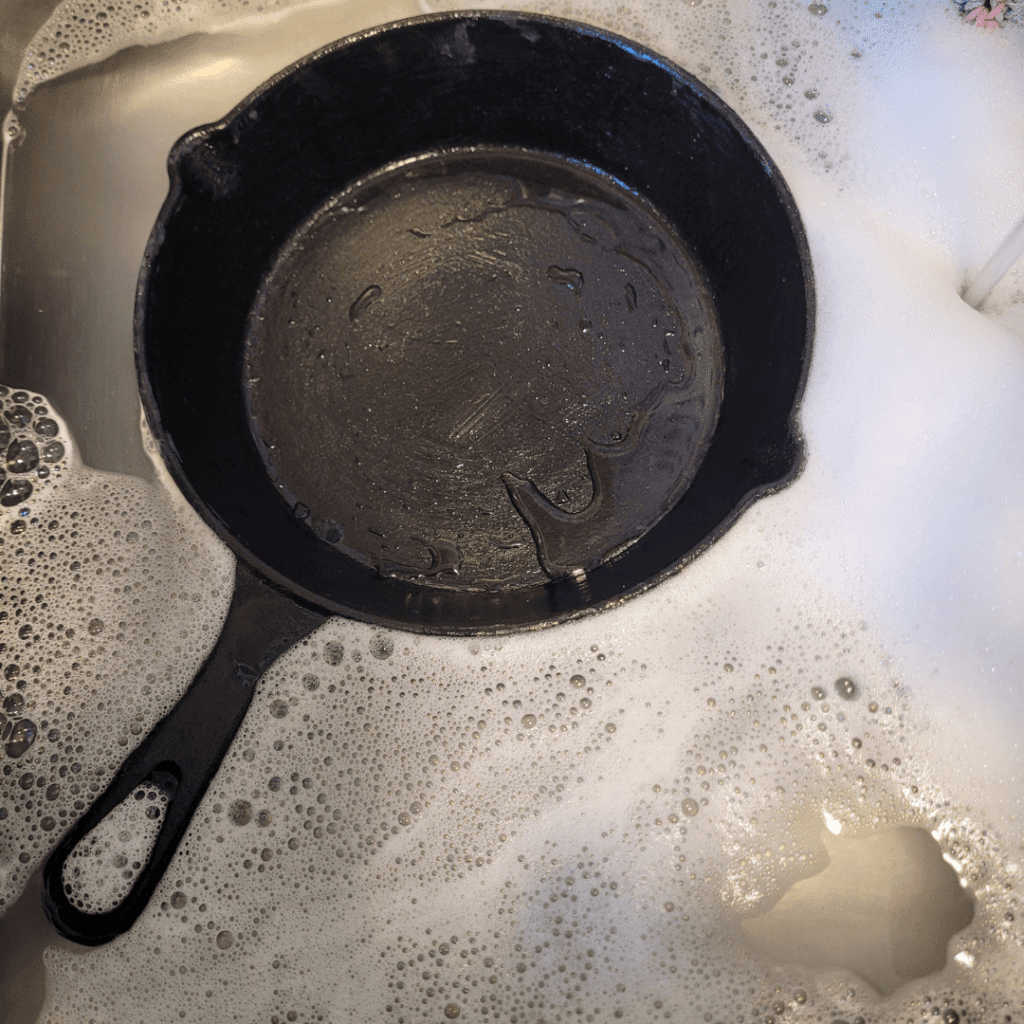
Before you dive into the world of seasoning, you’ll want to make sure your cast iron cookware is clean and dry before it gets all gussied up with seasoning.
Cleaning and Removing Residue
Bid farewell to any gunk or residue hanging out on your cast iron pan by giving it a good scrub with hot water and a gentle brush or sponge. I used a metal scrubber and a salt scrub to get all the cast iron cookware clean and ready for seasoning.
Drying the Cast Iron Thoroughly

After the cleaning session, make sure your cast iron pan is bone dry. Moisture is the enemy of cast iron, so give it a thorough toweling off or pop it in the oven for a quick heat-drying session, which is my favorite way to dry my cast iron cookware.
Seasoning Process Step-by-Step
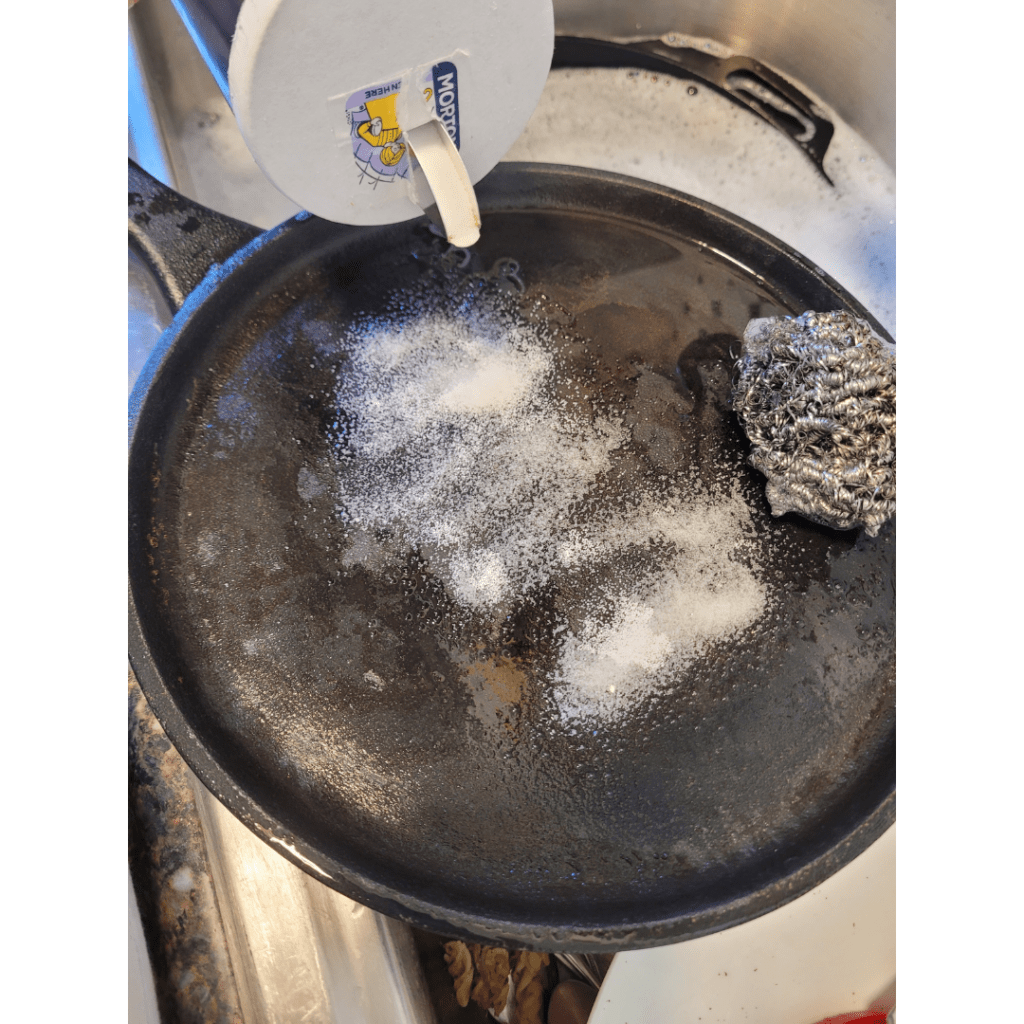
Now comes the fun part – seasoning your cast iron cookware and turning it into a cooking powerhouse. Get ready to unleash your inner culinary artist and give those pans a coating of love!
Choosing a Seasoning Method
Whether you prefer using vegetable oil, flaxseed oil, or good old-fashioned lard, there are plenty of seasoning options to choose from. Pick your poison and get ready to give your cast iron pan a glossy new look! My favorite seasoning to use for my cast iron cookware is vegetable Crisco to give them a shiny shine! I designate a container of vegetable Crisco just for my cast iron cookware set.
Applying the Seasoning Oil
Rub your choice of seasoning oil all over your clean, dry cast iron pan, making sure to cover every nook and cranny. Think of it as giving your pan a luxurious oil massage – it deserves to feel pampered since it provides you with delicious hot steamy meals! Don’t forget the handles and the backside!
Baking the Cast Iron
Pop your oiled-up cast iron cookware upside down into a preheated oven and let it bake at a high temperature. This process helps the oil bond with the pan, creating that coveted non-stick surface that dreams are made of. Once it’s done baking, let it cool, and voila – you’ve got yourself a seasoned cast iron pan ready to tackle any culinary challenge that comes its way. Depending on the individual cookware, you may need to repeat the process again until it reaches the glossy shine that will be ready for cooking.
Maintaining Seasoned Cast Iron
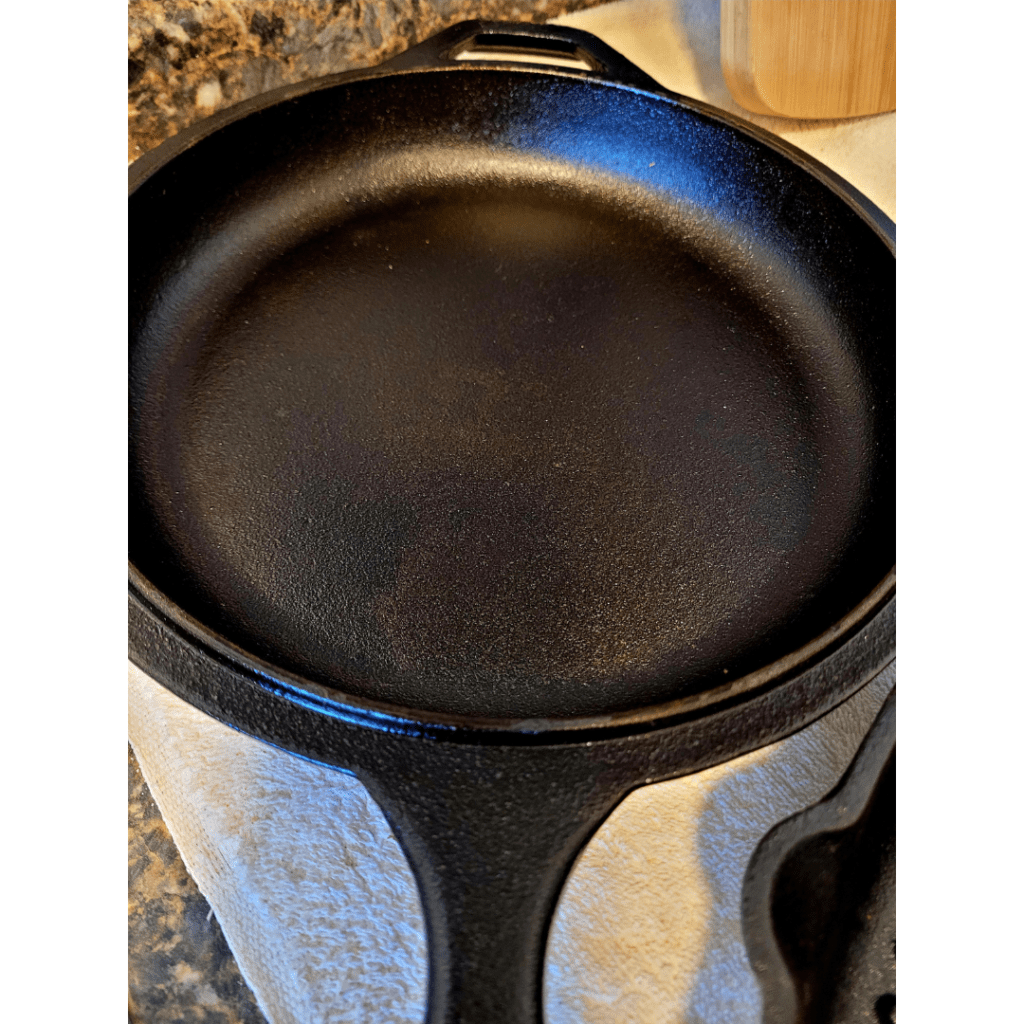
Cleaning After Use
After cooking with your cast iron pan, let it cool slightly before cleaning. Use hot water and a gentle scrub brush to remove any food residue. I have never had any issues using soap when cleaning my cast iron cookware. If I need to repeat the process to keep the shine, I will do it. Besides, the more you use your cast iron cookware, the more it seasons itself! Now, dry the pan thoroughly with a towel to prevent rusting.
Re-Seasoning as Needed
Over time, your cast iron may need to be re-seasoned to maintain its non-stick surface. To do this, apply a thin layer of oil to the pan and bake it upside down in the oven at a high temperature for about an hour. This will help restore its natural sheen and protect it from rust.
Tips for Cooking with Seasoned Cast Iron
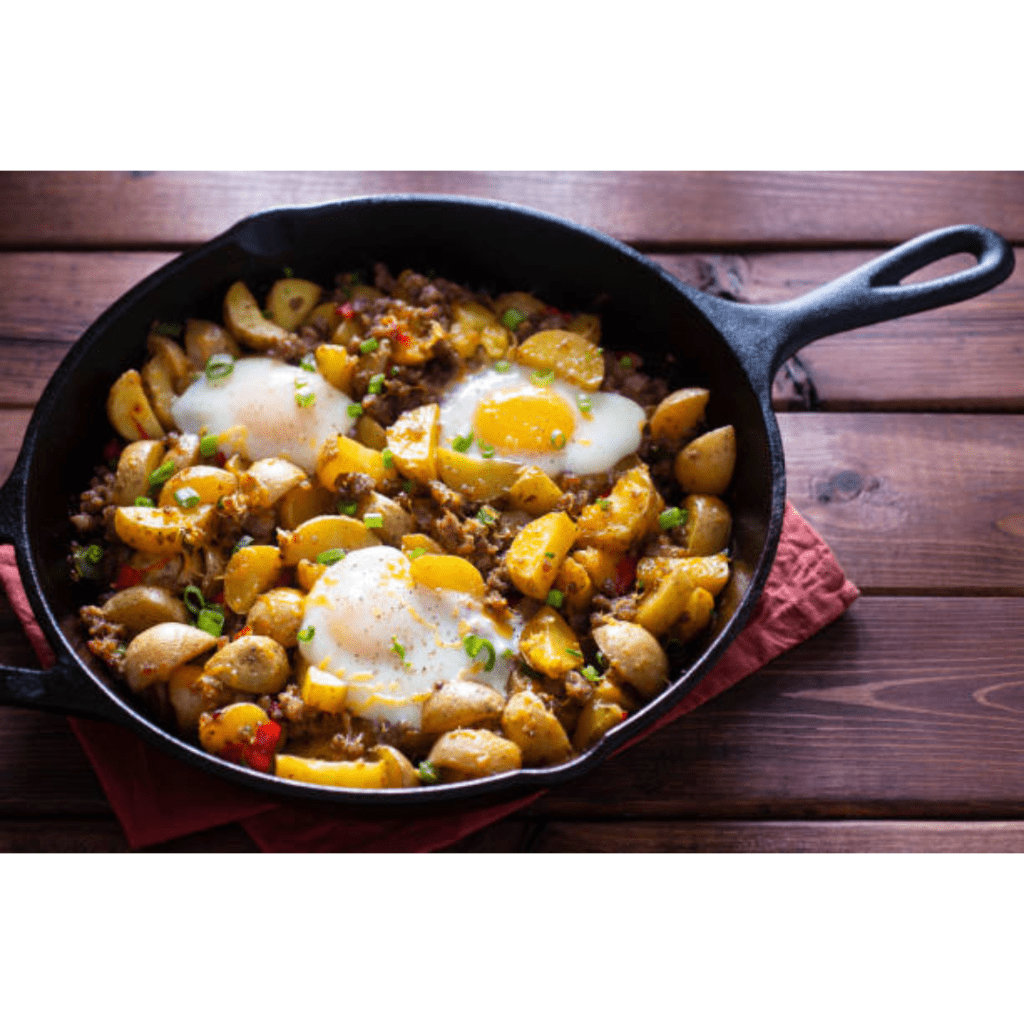
Cast iron cookware is like maintaining a relationship. If you neglect the nurturing process, the rust will build making it nearly impossible to cook comforting foods with. You will need to perform a lot of work to restore the beautiful shine of the piece. Cast iron is forgiving, but it will make you work for its attention, but it is worth it!
Proper Heating Techniques
Preheat your cast iron pan slowly to ensure even heating. Avoid overheating, as this can damage the seasoning. Use low to medium heat settings for most cooking tasks and adjust as needed. Most people think cast iron cooking requires extremely hot heat. While cast iron can tolerate highly extreme temperatures, it is not necessary for regular use.
The beauty of cast iron cookware is that it retains heat and distributes it evenly, meaning extremely high heat is not necessary to cook your eggs or pancakes. Just preheat for about 20 minutes, and it will be good and ready to cook anything. It just requires more time to preheat than regular pans do.
Using the Right Utensils
When cooking with cast iron, opt for utensils such as wooden or silicone spatulas to prevent scratching the seasoning. Avoid metal utensils that can damage the non-stick surface you’ve worked hard to maintain.
Troubleshooting Common Seasoning Issues
Uneven Seasoning
If you notice uneven seasoning on your cast iron pan, try applying a thin layer of oil and baking it in the oven to help even out the surface. Cooking with it regularly will also help redistribute the oils and maintain an even seasoning.
Flaking or Sticky Residue
Flaking or sticky residue on your cast iron pan could indicate a buildup of old seasoning. In this case, scrub the pan with a mixture of salt and oil to remove the residue, then re-season it to restore its non-stick properties. Remember, a well-seasoned cast iron pan is a joy to cook with, so don’t be afraid to give it some TLC when needed.
Dealing with Rust!
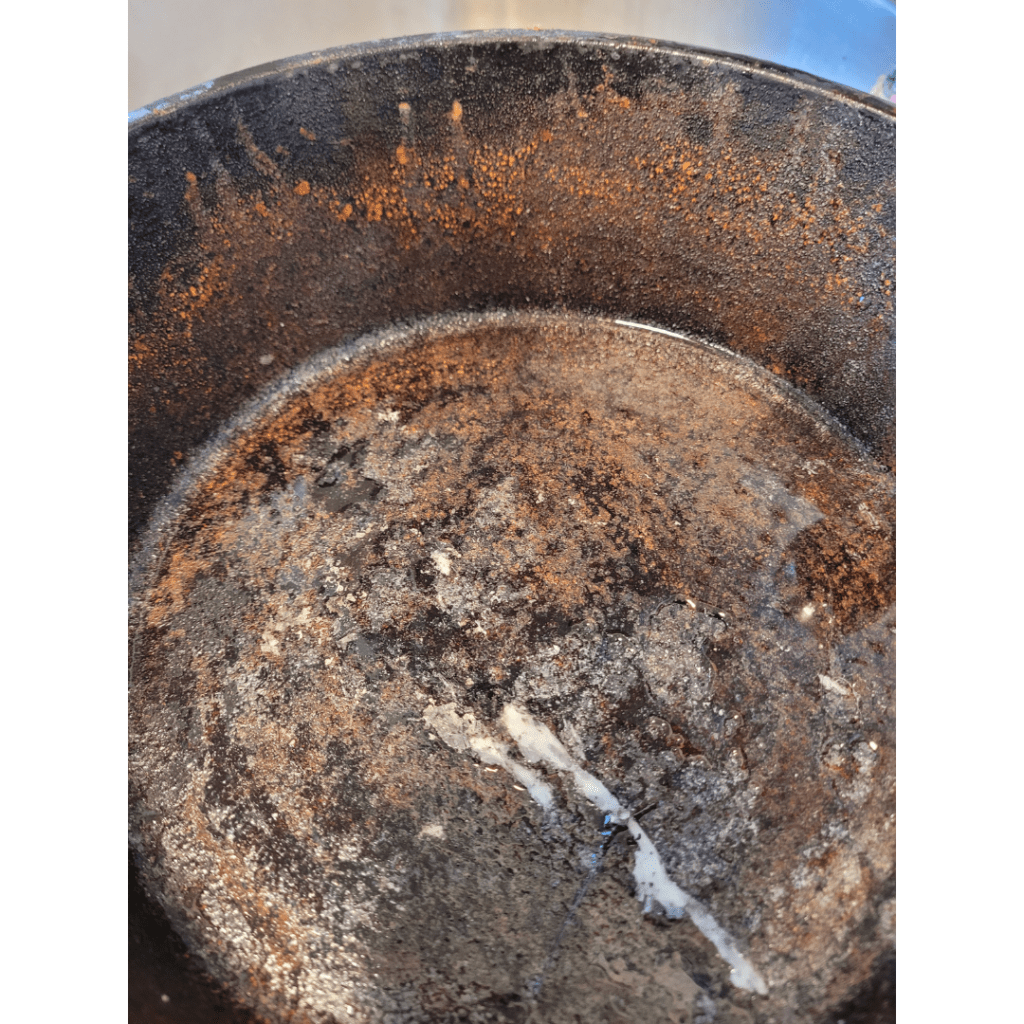
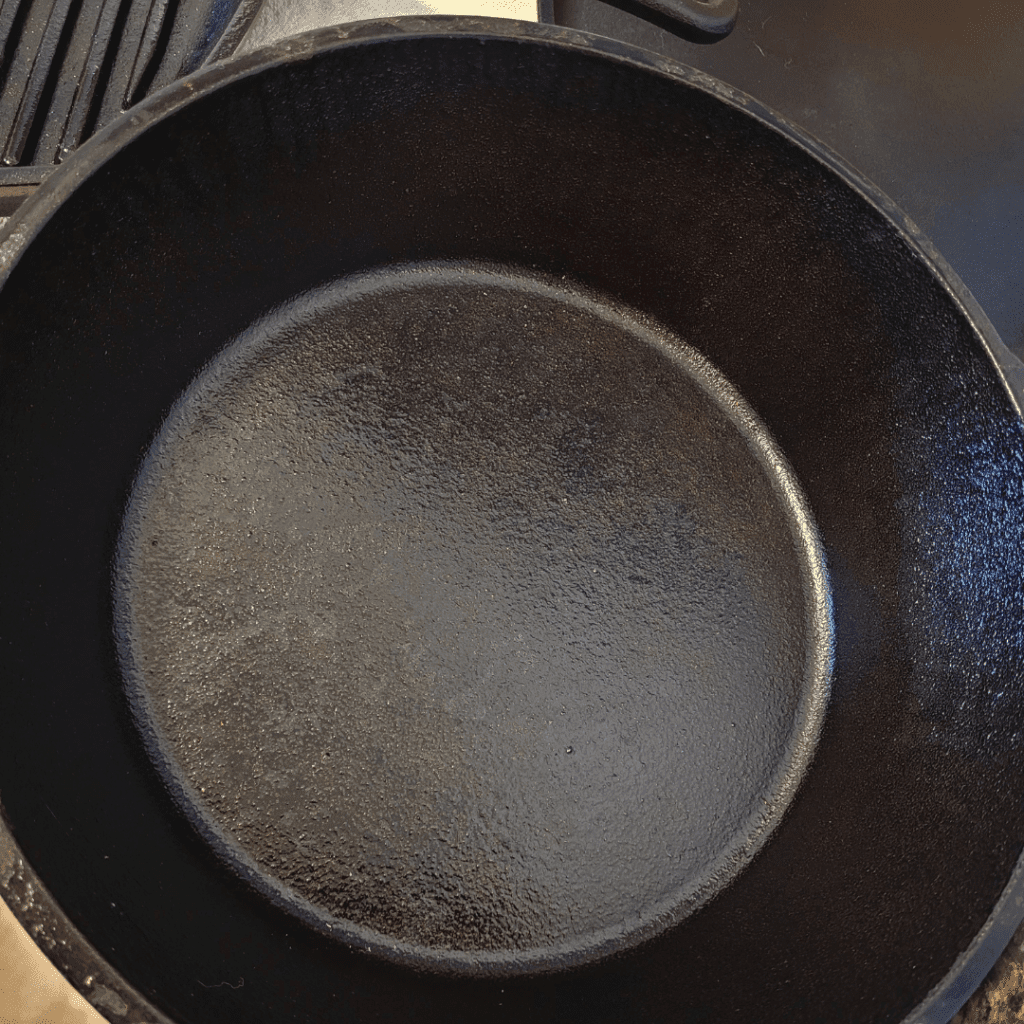
Did one of your cast iron pans rust out on you? Don’t panic! It can be fixed. Whether you neglected it, left it out in the rain, forgot about it in storage during a move (this is my excuse), found a rusty piece of treasure, or was given an old rusty pan from someone who does not want to deal with it, you can bring it back to its shiny black state.
Grab your rusty piece of treasure, fill a sink with hot soapy water, and grab a metal scrubber, and a container of pink Himalayan salt for a good scrub. I choose to use this type of salt since it is very grainy and has larger chunks to withstand a good scrub.
A Fun Quick History Lesson!
Back in the day, cowboys would lug their heavy cast iron cookware everywhere with them since they cooked well over campfires. I could not image lugging around my heavy cast iron pieces, but that’s just me. To clean and season them, they would go to the river, grab a handful of sand, and scrub away until the pan was clean with a good rinse in the river. They would take it back to the campfire to put over the fire to dry with rubbed oil all over it. Scrubbing my cookware in the river does not sound too yummy to me, but that is what they did.
Conclusion
In conclusion, mastering the art of seasoning cast iron is a key step in caring for your cookware and elevating your culinary creations. By following the steps outlined in this guide and incorporating the tips provided, you can enjoy the benefits of well-seasoned cast iron for years to come. With proper maintenance and cooking techniques, seasoned cast iron can become a beloved kitchen companion that enhances the flavor and quality of your dishes. Embrace the time-honored tradition of cast iron cooking and savor the results it brings to your table. Cast iron cookware in my kitchen brings me so much joy!
Resources: Here are some helpful resources for further information.
- How to Season a Cast Iron Pan (It’s Easier Than You Think!) – By Serious Eats
- How to Season Cast Iron (Like a Boss) – By Jess Pryles
- How to Season a Cast Iron Pan – By Tasting Table
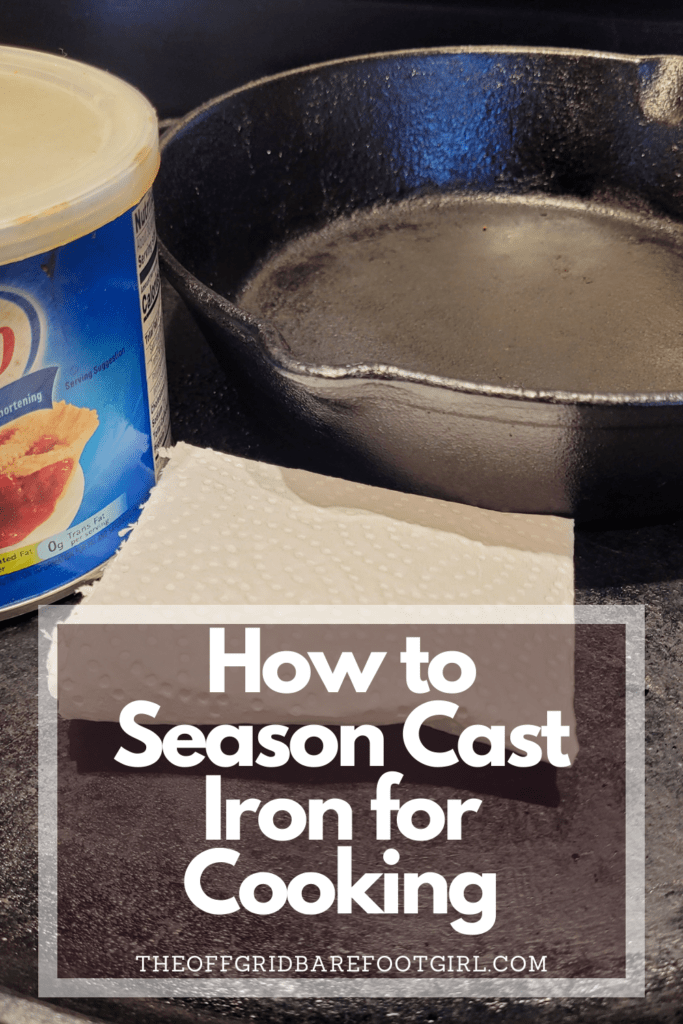
Frequently Asked Questions
1. How often should I season my cast iron cookware?
Seasoning your cast iron cookware is essential for maintaining its non-stick surface and preventing rust. How often you should season your cast iron depends on how frequently you use it. If you use your cast iron pan regularly, a light seasoning after each use is ideal to keep it in top condition. Simply wipe the pan with a thin layer of oil or fat and heat it on the stovetop until it starts to smoke. For less frequent use, seasoning every few weeks or whenever you notice food sticking is sufficient. Remember, proper care and maintenance of your cast iron cookware will ensure its longevity and performance in the kitchen, so don’t be afraid to give it a little extra love from time to time.
2. Can I use soap to clean seasoned cast iron?
Yes, you can use soap to clean seasoned cast iron, contrary to popular belief. While it is true that using soap on cast iron can strip away the seasoning, modern dish soaps are mild enough that they won’t harm the protective layer if used sparingly and rinsed off thoroughly. The key is to avoid harsh chemicals or abrasive scrubbers that can damage the seasoning. To maintain the seasoning of your cast iron cookware, simply wash it with warm water and a small amount of gentle dish soap, then dry it immediately and apply a thin layer of oil before storing it. This will keep your cast iron in great condition and ready for many more delicious meals to come!
3. What do I do if my cast iron starts to rust after seasoning?
If your cast iron starts to rust after seasoning, don’t panic! Rust can happen, especially if the seasoning process isn’t done properly or if moisture is left on the pan. To fix it, grab some steel wool or a scrubbing pad and gently scrub away the rust until it’s completely gone. Next, wash the pan with warm water and a small amount of dish soap. Dry it thoroughly with a towel, then place it on the stove over low heat to ensure it’s completely dry. Finally, apply a thin layer of vegetable oil or shortening to the pan and bake it in the oven upside down at 450°F for about an hour to restore its seasoning. Remember, prevention is key – always dry your cast iron thoroughly after washing, and never leave water sitting in it for long periods of time.
Jump to the Step By Step Process!
Seasoning cast iron is a crucial process to create a non-stick surface and prevent rust. Here’s a summary of how to season cast iron for cooking:
Preparation
- Clean the Cast Iron:
- Wash the cast iron with warm water and mild soap to remove any dirt or factory coating. Avoid using harsh chemicals.
- Dry Thoroughly:
- Dry the cast iron completely using a towel. Ensure there is no moisture left on the surface to prevent rusting. Place in the oven to ensure it is completely dry.
- Preheat Oven:
- Preheat your oven to a high temperature, typically around 450-500°F (232-260°C).
- Apply Cooking Oil:
- Use a paper towel or a clean lint-free cloth to apply a thin, even layer of cooking oil to all surfaces of the cast iron, including the handle and exterior as well as the back.
- Remove Excess Oil:
- Wipe off any excess oil to avoid a sticky finish. The goal is to create a thin, polymerized layer of oil on the surface.
- Upside-Down Placement:
- Place the cast iron upside-down in the preheated oven. Placing it upside-down allows any excess oil to drip off, preventing pooling.
- Bake in Oven:
- Bake the cast iron in the oven for about 1-2 hours. This allows the oil to polymerize and bond with the iron, creating a durable non-stick coating.
- Cool Completely:
- Turn off the oven and let the cast iron cool completely inside. The slow cooling process helps the seasoning adhere properly.
- Repeat if Necessary:
- For new cast iron or if the initial seasoning seems insufficient, repeat the process 2-3 times to enhance the non-stick coating.
- Maintain Regularly:
- After each use, clean the cast iron with a brush or gentle scrubber. Dry it thoroughly and apply a thin layer of oil to maintain the seasoning.
Remember, consistent use and proper maintenance contribute to a well-seasoned cast iron pan that will improve over time, providing excellent non-stick properties for cooking.
Summary
I hope I have inspired you to season your cast iron cookware to cook delicious food to enjoy and share with your friends and family.
If you were encouraged by this post, I invite you to check out my FREE Printables Page for fun free printables, planners, and charts.
ENTER MY FREE Printables Page HERE
Here are some more of my cast iron cooking inspiration posts to check out!
The Best Old-Fashioned Homemade Brownies: A Cast Iron Skillet Recipe!
How to Make Dutch Oven Lasagna
How to Make Black Bean Burgers from the Garden!
Blessings,
The Off Grid Barefoot Girl






